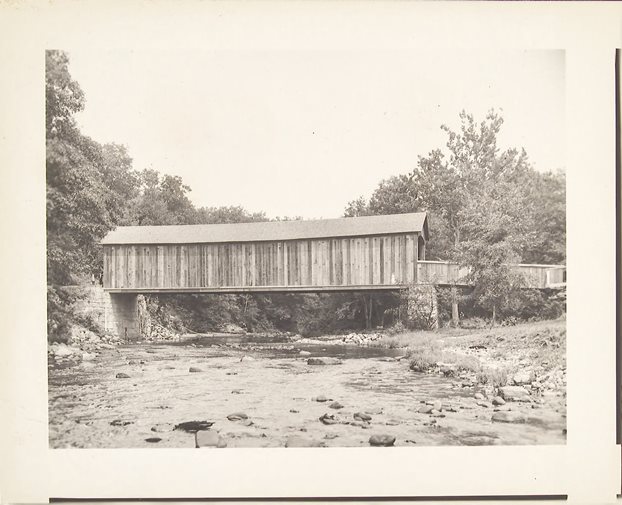Over the Salmon River in East Hampton rests the Comstock Bridge. Named after the town’s first postmaster, Franklin G. Comstock, it served as part of the main road between Colchester and Middletown for much of its existence. Numerous renovations and a listing on the National Register of Historic Places ensured its preservation. Today, it provides New England sightseers with an opportunity to travel over a unique feat of 19th-century Yankee ingenuity and one of the last covered bridges remaining in the state.
In 1785, residents living south of the Salmon River in the town of East Hampton (then known as Chatham) encountered great difficulties in crossing the river to attend church services and conduct business with their fellow citizens north of the waterway. Crossing became such an inconvenience that southern residents even considered joining a different town. Rather than lose valuable tax revenues, town officials petitioned the General Assembly for money to build a bridge. Workers completed work on the uncovered structure approximately six years later.

Comstock bridge from the east approach, 1975 – National Register of Historic Places and the Connecticut Historical Commission
After almost 100 years of service from the bridge, the town spent $4,000 in 1873 to rebuild it into something more closely resembling its current form. The refurbished Comstock Bridge facilitated traffic between Colchester and Middletown for nearly 60 years, until it became unsuitable for supporting the increasingly heavier forms of vehicular traffic.
In the 1930s, the Civilian Conservation Corps went to work renovating the bridge and added, among other things, wooden gates and new siding. A new concrete structure, built just 500 feet downstream from the Comstock Bridge, took over the responsibility of getting vehicles across the river.
Despite its reduced role, age and weather continued to threaten destruction of the bridge. In 1969, with many of its timbers rotted, the Comstock Bridge began to sag and was in danger of collapsing under its own weight. Temporary supports put in place saved the span until major renovations in the early 1970s added steel plates to support the overburdened joints.
The bridge’s unique architecture earned it a listing on the National Register of Historic Places in 1976. The landmark is not only a well-preserved example of a Howe truss—a design patented in 1840—but also provides the only remaining example in Connecticut of a wooden pony truss (a configuration where the traffic-bearing span is flanked by parallel structures that are not cross-braced at the top). Today, this testament to innovative design is part of a public park, allowing visitors to take a step back in East Hampton’s transportation history.









